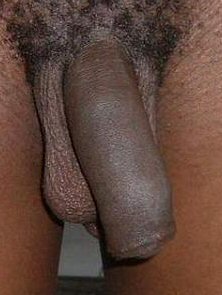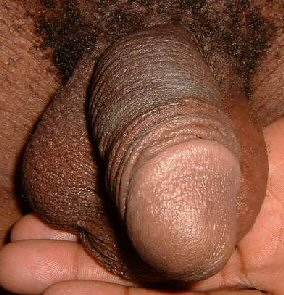|
When I was sixteen, the regent decided that it was time that I became a man. In Xhosa tradition, this is achieved through one means only: circumcision. In my tradition, an uncircumcised male cannot be heir to his father's wealth, cannot marry or officiate in tribal rituals. An uncircumcised Xhosa man is a contradiction in terms, for he is not considered a man at all, but a boy. For the Xhosa people, circumcision represents the formal incorporation of males into society. It is not just a surgical procedure, but a lengthy and elaborate ritual in preparation for manhood. As a Xhosa, I count my years as a man from the date of my circumcision. ... It was a sacred time; I felt happy and fulfilled taking part in my people's customs and ready to make the transition from boyhood to manhood. ... At dawn, when the stars were still in the sky, we began our preparations. We were escorted to the river to bathe in its cold waters, a ritual that signified our purification before the ceremony. The ceremony was at midday, and we were commanded to stand in a row in a clearing some distance from the river where a crowd of parents and relatives, including the regent, as well as a handful of chiefs and counsellors, had gathered. We were clad only in our blankets and as the ceremony began, with drums pounding, we were ordered to sit on a blanket on the ground with our legs spread out in front of us. I was tense and anxious, uncertain of how I would react when the critical moment came. Flinching or crying out was a sign of weakness and stigmatized one's manhood. I was determined not to disgrace myself, the group or my guardian. Circumcision is a trial of bravery and stoicism; no anaesthetic is used; a man must suffer in silence. To the right, out of the corner of my eye, I could see a thin, elderly man emerge from a tent and kneel in front of the first boy. There was excitement in the crowd, and I shuddered slightly, knowing that the ritual was about to begin. The old man was a famous ingcibi, a circumcision expert, from Gcalekaland, who would use his assegai to change us from boys to men with a single blow. Suddenly I heard the first boy cry out, ''Ndiyindoda!' ('I am a man!'), which we had been trained to say at the moment of circumcision. Seconds later, I heard Justice's strangled voice pronounce the same phrase. There were now two boys before the ingcibi reached me, and my mind must have gone blank because, before I knew it, the old man was kneeling in front of me. I looked directly into his eyes. He was pale, and though the day was cold, his face was shining with perspiration. His hands moved so fast they seemed to be controlled by an otherworldly force. Without a word, he took my foreskin, pulled it forward, and then, in a single motion, brought down his assegai. I felt as if fire was shooting through my veins; the pain was so intense that I buried my chin in my chest. Many seconds seemed to pass before I remembered the cry, and then I recovered and called out, 'Ndiyindoda!' [To his biographer Anthony Sampson, he compared the sensation to "molten lead flowing through his veins". - "Mandela: the authorised biography", Harper Collins (1999) p14]
I looked down and saw a perfect cut, clean and round like a ring. But I felt ashamed because the other boys seemed much stronger and firmer than I had been; they had called out more promptly than I had. I was distressed that I had been disabled, however briefly, by the pain, and I did my best to hide my agony. A boy may cry; a man conceals his pain. I had now taken the essential step in the life of every Xhosa man. Now I might marry, set up my own home and plough my own field. I could now be admitted to the councils of the community; my words would be taken seriously. ... Immediately after the blow had been delivered, an assistant who followed the circumcision master took the foreskin that was on the ground and tied it to a corner of our blankets. Our wounds were then dressed with a healing plant, the leaves of which were thorny on the outside but smooth on the inside, which absorbed the blood and other secretions. At the conclusion of the ceremony, we returned to our huts, where a fire was burning with wet wood that cast off clouds of smoke, which was thought to promote healing. We were ordered to lie on our backs in the smoky huts, with one leg flat, and one leg bent. We were now abakwetha, initiates into the world of manhood. We were looked after by an amakhankatha, or guardian, who explained the rules we had to follow if we were to . enter manhood properly. The first chore of the amakhankatha was to paint our naked and shaved bodies from head to foot in white ochre, turning us into ghosts. The white chalk symbolized our purity, and I still recall how stiff the dried clay felt on my body. That first night, at midnight, an attendant, or ikhankatha, crept around the hut, gently waking each of us. We were then instructed to leave the hut and go tramping through the night to bury our foreskins. The traditional reason for this practice was so that our foreskins would be hidden before wizards could use them for evil purposes, but, symbolically, we were also burying our youth. I did not want to leave the warm hut and wander through the bush in the darkness, but I walked into the trees and, after a few minutes, untied my foreskin and buried it in the earth. I felt as though I had now discarded the last remnant of my childhood. ... On the day of our re-emergence, we went down to the river early in the morning to wash away the white ochre in the waters of the Mbashe. Once we were clean and dry, we were coated in red ochre. The tradition was that one should sleep with a woman, who later might become one's wife, and she rubs off the pigment with her body. [Today, this would present a serious risk of being infected with HIV.] In my case, however, the ochre was removed with a mixture of fat and lard. ... Now I was a man, and I would never again play thinti, or steal maize, or drink milk from a cow's udder. I was already in mourning for my own youth. Looking back, I know that I was not a man that day and would not truly become one for many years. - from Chapter 4, "A Country Childhood", pp 30-36 On Robben Island... Not all debates were political. One issue that provoked much discussion was circumcision. Some among us maintained that circumcision as practised by the Xhosa and other tribes was not only an unnecessary mutilation of the body but a reversion to the type of tribalism that the ANC was seeking to overthrow. It was not an unreasonable argument, but the prevailing view, with which I agreed, was that circumcision was a cultural ritual that had not only a salutary health benefit but an important psychological effect. It was a rite that strengthened group identification and inculcated positive values. - from Chapter X, "Robben Island: The Dark Years" pp 510-511 [He does not say he still thinks so.] | ||||

